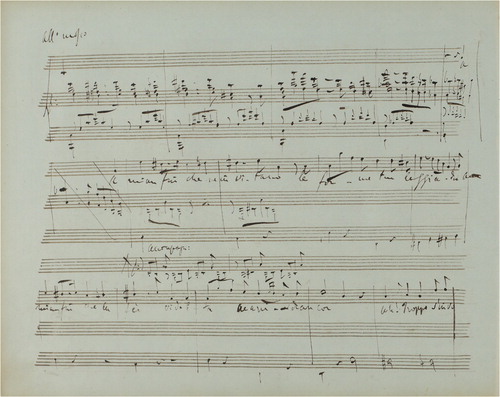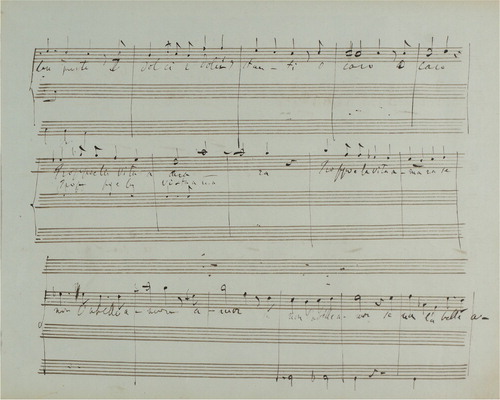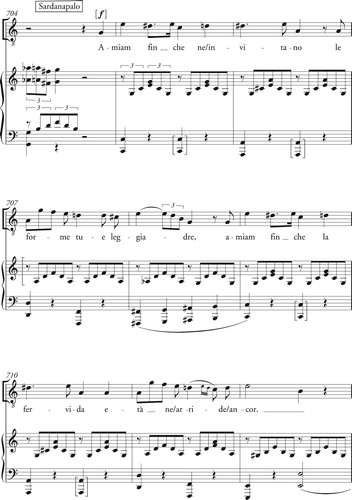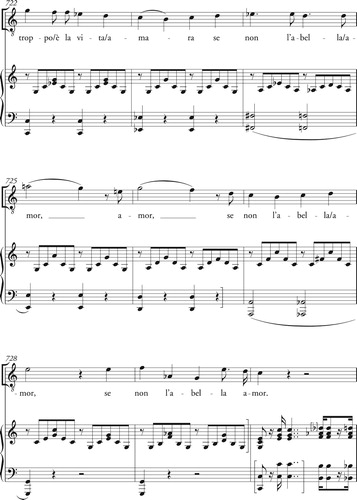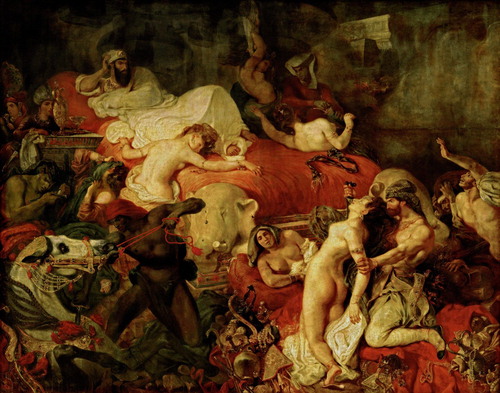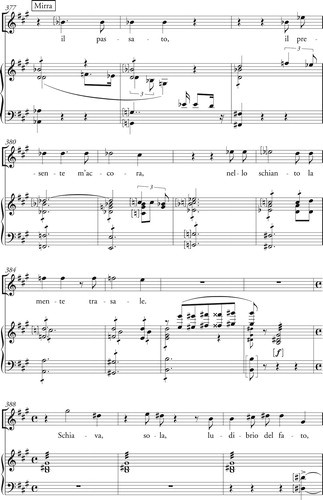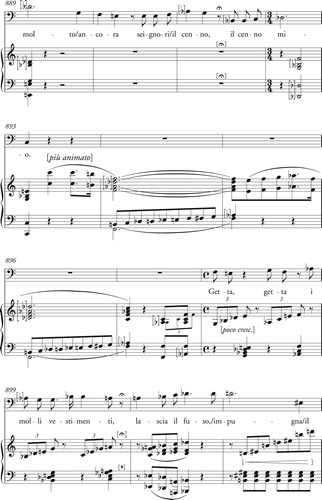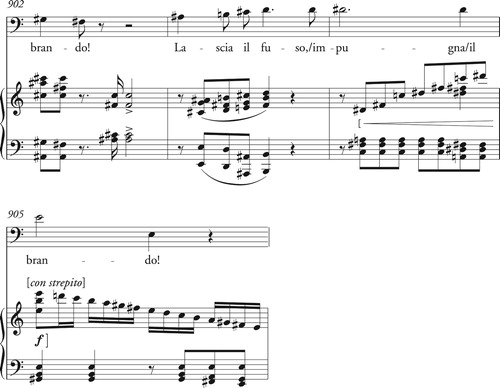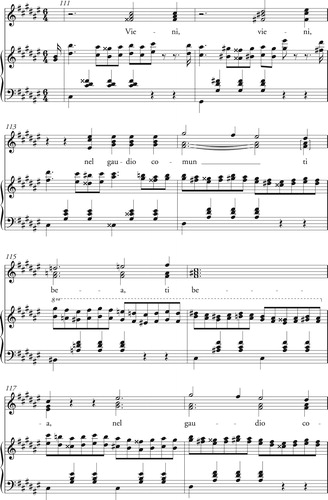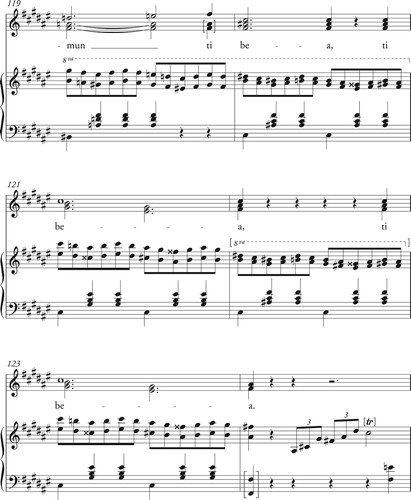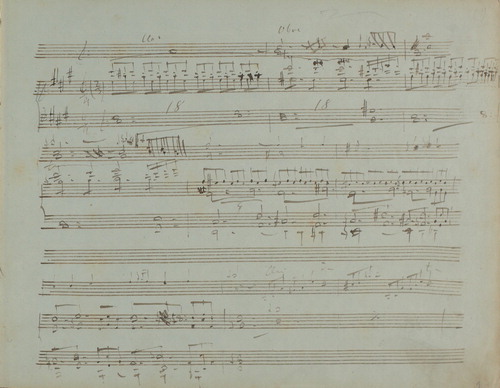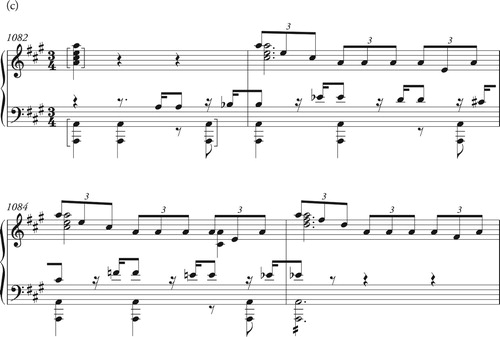Figures & data
Table 1 operatic settings of the tale of sardanapalus during the nineteenth century
Figure 3. Assyrian shedu or lamassu, winged bulls who guard gateways, relocated from northern Iraq to museums in London and Paris during the 1850s. Photo © Musée du Louvre, Dist. RMN-Grand Palais / Thierry Ollivier.
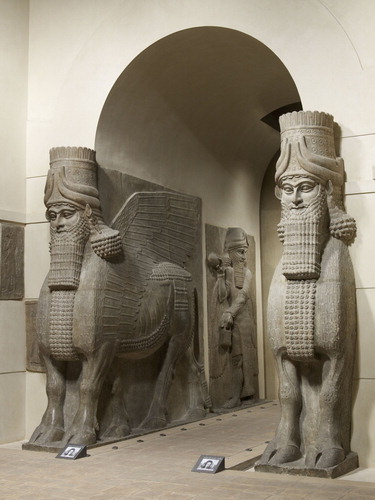
Figure 4. The title page of Pietro Rotondi’s libretto, Sardanapalo (1844). From the Italian Opera Libretto Collection, Music Library, University of North Carolina at Chapel Hill. With permission.
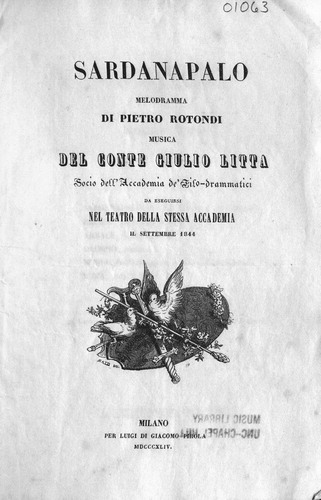
Table 2 a timeline for the genesis of liszt’s sardanapale based on actions confirmed in extant correspondence
Table 3 direct borrowings from byron’s sardanapalus in liszt’s opera libretto
Example 5b. Liszt’s 1839 arrangement of Donizetti’s Barcarolle from the collection of arias and nocturnes Nuits d’été à Pausilippe (1836), bars 19–26.
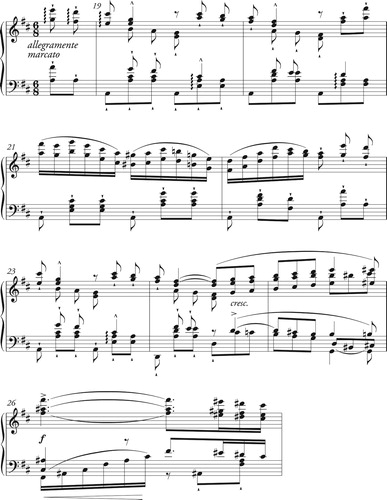
Example 6. Rhythmic modelling in duple-time Italianate march themes from (a) Liszt, (b) Bellini, (c) Donizetti and (d) Wagner.
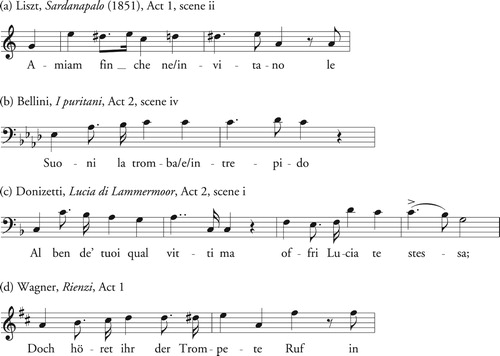
Table 4 a portion of the libretto from scene iii of sardanapalo, illustrating liszt’s interpolations and decision to ignore the implications of the anonymous poet’s distinction between metrical verse and recitative
Figure 5a. Liszt’s first draft of Tasso: Lamento e trionfo, dated 1847, written in score format playable at the keyboard, and showing instrumentation cues. GSA 60/N5, fol. 28r. Photo: Klassik Stiftung Weimar.


